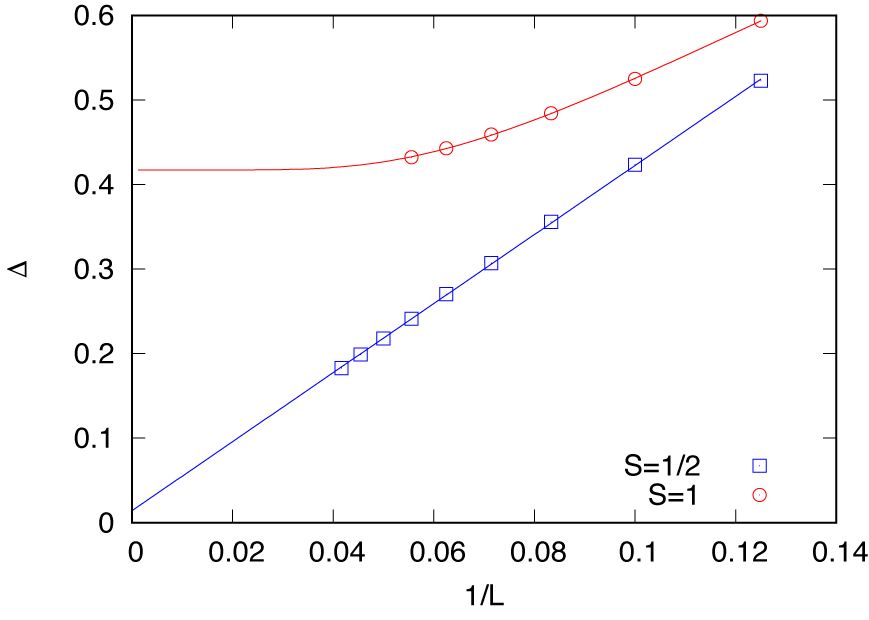3.2. Example for moller calculation with HPhi¶
What’s this sample?¶
This is an example of moller with
HPhi, which is an
open-source software package for performing the exact diagonalization
method for quantum many-body problems. In this example, we will
calculate the system size dependence of the excitation gap
\(\Delta\) of the \(S=1/2\) (2S_1 directory) and \(S=1\)
(2S_2) antiferromagnetic Heisenberg chain under the periodic
boundary condition. By using moller, calculations with different
system sizes are performed in parallel. This is corresponding to
section
1.4
of HPhi’s official tutorial.
Preparation¶
Make sure that moller (HTP-tools) package and HPhi are
installed. In this tutorial, the calculation will be performed using the
supercomputer system ohtaka at ISSP.
How to run¶
Prepare dataset
Run the script
make_inputs.shenclosed within this package.$ bash ./make_inputs.sh
Working directories
L_8,L_10, …,L_24(up toL_18for2S_2)) will be generated. A list of the directories is written to a filelist.dat. Additionally, a shell script,extract_gap.sh, to gather energy gaps from working directories is generated.Generate job script using
mollerGenerate a job script from the job description file using
moller, and store the script as a file namedjob.sh.$ moller -o job.sh input.yaml
Run batch job
Submit a batch job with the job list as an argument.
$ sbatch job.sh list.dat
Check status
The status of task execution will be summarized by
moller_statusprogram.$ moller_status input.yaml list.dat
Gather results
Once the calculation finishes, gather energy gaps from jobs as
$ bash extract_gap.sh
This script writes pairs of the length \(L\) and the gap \(\Delta\) into a text file,
gap.dat.To visualize the results, a Gnuplot file
gap.pltis available. In this file, the obtained gap data are fitted by the expected curves,(3.1)¶\[\Delta(L; S=1/2) = \Delta_\infty + A/L\]and
(3.2)¶\[\Delta(L; S=1) = \Delta_\infty + B\exp(-CL).\]The result is plotted as follows:
$ gnuplot --persist gap.plt

Fig. 3.3 Finite size effect of spin gap¶
Note that the logarithmic correction causes the spin gap for \(S=1/2\) to remain finite. On the other hand, for \(S=1\), the extrapolated value \(\Delta_\infty = 0.417(1)\) is consistent with the previous results, e.g., \(\Delta_\infty = 0.41048(6)\) by QMC (Todo and Kato, PRL 87, 047203 (2001)).